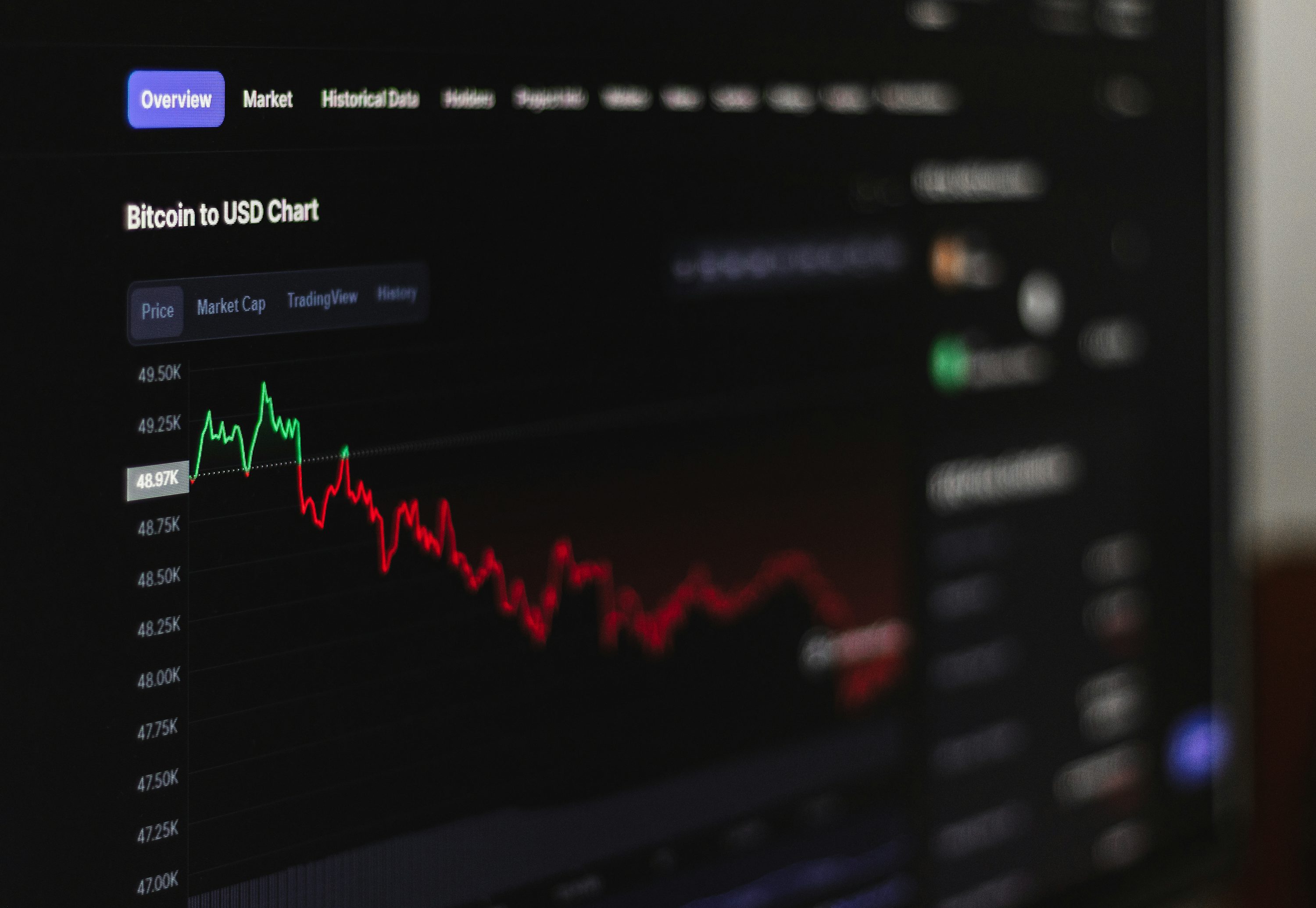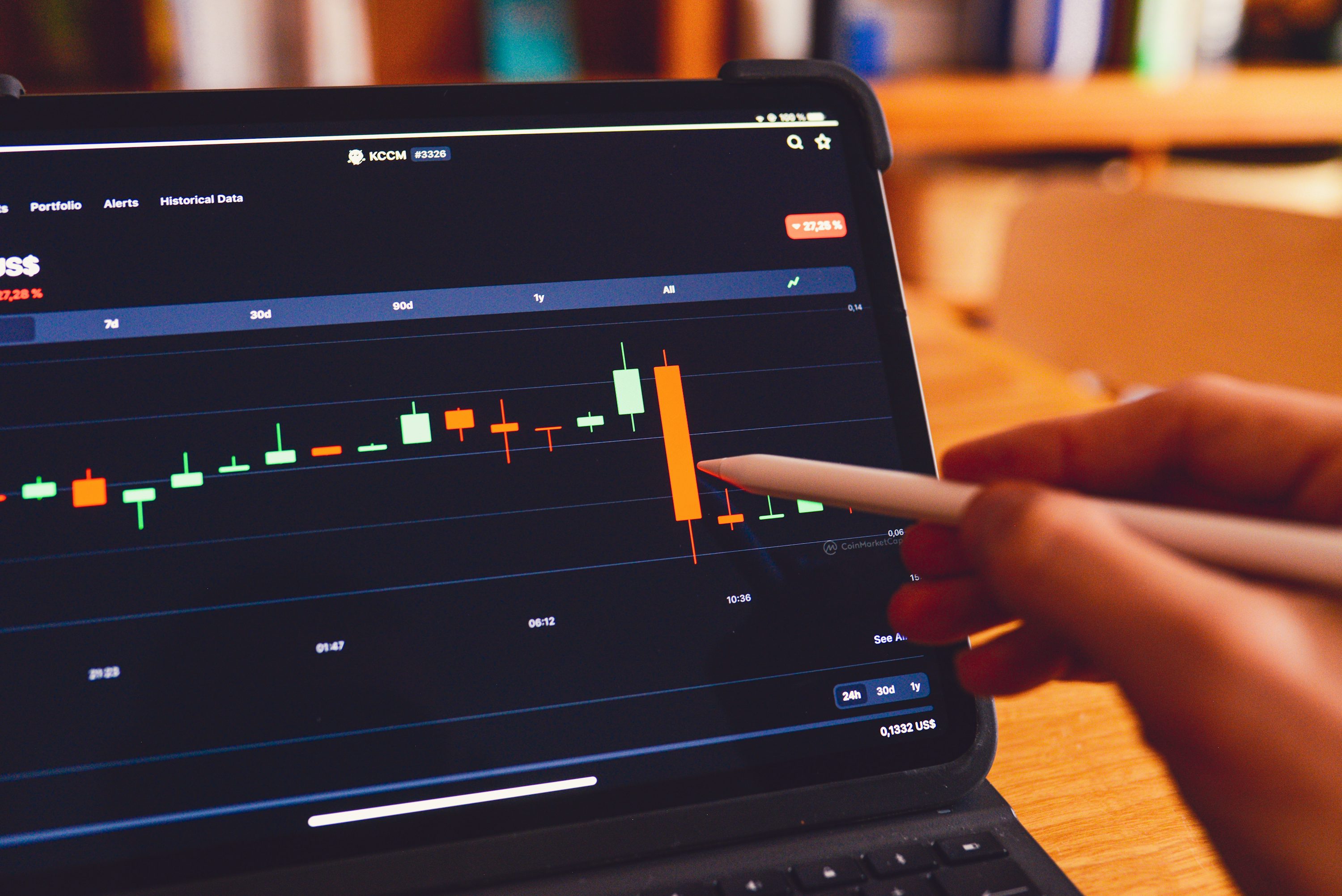How Do You Backtest A Trading Strategy in 12 Steps
Learn how do you backtest a trading strategy in 12 straightforward steps to improve decision-making and reduce risk before you trade.

If you're looking for a place to start and wondering where to learn trading, you're likely to hear about backtesting a lot. Consider you're eager to try out a new trading strategy but not quite ready to risk your hard-earned cash. Enter backtesting, the process of seeing how your strategy would have performed using historical data. This crucial step helps you refine your approach before deploying it in live markets. In this guide, I’ll walk you through the steps to backtest your trading strategy, so you can maximize your trading potential with the capital you have.
Aqua Funded's funded trading program can help you here. With the opportunity to trade with your capital, this program enables you to test and refine your strategies without risking your actual funds.
What is Backtesting a Trading Strategy

Backtesting lets traders check if their strategies would have worked in the past. By applying an approach to historical data, traders can gauge accuracy and viability without risking money. If a strategy failed historically, it's unlikely to succeed in the future. Successful backtests reveal strategies that performed well, assuming that stock movements can show similar patterns over time, even if the market doesn't behave the same way.
How Backtesting Works
Backtesting is a powerful tool allowing traders to test their strategies without financial risk. By analyzing past performance, traders can avoid strategies that failed historically, while successful backtests reveal strategies with strong past performance. The results help traders identify strategies with high profitability and low risk, enabling them to optimize their approach before deploying it in live trading.
How Backtesting Works
Backtesting provides a risk-free environment to put trading strategies under the microscope. By experimenting with various techniques and measuring their performance, traders can identify what works and what doesn’t. The two main components analyzed are profitability and risk. A successful backtest can highlight strategies that consistently show positive results.
How to Implement Backtesting
Backtesting typically involves coding a trading strategy and running a simulation using historical data from stocks, bonds, and other financial instruments. The simulation enables traders to evaluate returns across various datasets and market conditions. By adjusting variables and optimizing for multiple metrics, traders can refine their strategies for improved performance.
Common Backtesting Measures
Backtesting measures include profitability, return, risk-adjusted return, market exposure, and volatility. These metrics enable traders to evaluate the performance of a trading strategy and make necessary adjustments for optimization.
Benefits of Backtesting a Trading Strategy

Validating Your Trading Strategy
Backtesting offers a scientific way to validate trading strategies. By applying an approach to historical data, you can see if it would have been profitable or effective in the past. This gives you confidence before deploying it in real-world scenarios. Without this, traders might rely on gut feelings or unproven ideas, leading to potential losses.
Spotting Strategy Flaws
Backtesting helps identify weaknesses in your trading strategies. By observing how a strategy performs under various market conditions, you can pinpoint specific situations where it fails. This allows you to make necessary adjustments and boost the strategy’s overall strength.
Optimizing for Success
Backtesting is a key part of optimizing trading strategies. You can test different parameters and configurations to find the most effective combination. Tweaking stop-loss levels, entry and exit points, and other variables can significantly impact strategy performance. Backtesting provides the data you need to make these optimizations.
Balancing Risk and Reward
Successful trading strategies balance risk and reward. Backtesting helps you understand the risk associated with a plan by analyzing drawdowns, volatility, and other metrics. This understanding enables you to manage your portfolio more effectively and minimize excessive risk exposure.
Boosting Strategy Confidence
Backtesting builds confidence in your trading strategies. Knowing your plan has been tested and shown promising results in historical data gives you the psychological assurance needed to stick with it during market volatility. This confidence is crucial for maintaining discipline and avoiding impulsive decisions.
Benchmarking for Better Performance
Backtesting provides a benchmark for strategy performance. You can compare your strategy’s results against standard benchmarks, such as market indices or other trading strategies. This helps you understand how your strategy stands relative to the broader market and other potential trading approaches.
Adapting to Market Changes
Markets are constantly changing, with new trends and patterns emerging. Continuous backtesting enables you to adjust your strategies in response to these evolving conditions. By regularly updating your backtests with the latest data, you can ensure your strategies remain relevant and practical.
Turn Trading Skills into Profits
Ready to take your trading to the next level? Our funded trading program at AquaFunded enables you to transform your skills into substantial profits without risking your capital. Access accounts up to $400K with flexible trading conditions and keep up to 100% of what you earn. Join over 42,000 traders worldwide and start trading today with instant funding options.
Related Reading
- How Long Does It Take To Learn Day Trading
- How Long Does It Take To Learn Forex Trading
- Which Trade Is Best For Beginners
- How Many Day Traders Are Successful
- Do You Pay Tax On Forex Trading
- How To Start Trading As A Student
- How Much To Start Day Trading
- How To Do Trading Business
- Forex Trading Psychology
How Do You Backtest A Trading Strategy in 12 Steps

1. Selecting Your Backtesting Platform
When it comes to backtesting a trading strategy, picking the right tools is crucial. For manual backtesting, spreadsheets such as Excel or Google Sheets can be used. You'll scroll through historical data, apply your rules, and jot down results. Use your trading platform to set charts with indicators, scroll back, and move forward candle by candle to dodge bias. Annotate your charts and take screenshots. For automated backtesting, platforms like MetaTrader or TradingView make life easier. They let you input your strategy and run tests automatically.
2. Setting Clear Strategy Rules
Before you start, lay down some ground rules. Decide on a timeframe, such as daily, 4 hours, or 15 minutes, and stick to it. Define your entry and exit rules clearly and concisely. These should be specific, like buying when a 30-minute candle closes above a resistance zone in an uptrend. Also, nail down your risk management: determine how much you'll risk per trade, establish stop-loss orders, and set a position size. This sets the stage for effective backtesting.
3. Gathering Historical Data
Select your market and timeframe. Whether you're interested in currency pairs or stocks, ensure you have access to accurate historical data. You might need to pay for quality data, or you can find free options on trading platforms or financial websites. Think about dividing your data into in-sample and out-of-sample sets. The former is for tweaking your strategy, and the latter is for testing it on fresh data.
4. Running Your Backtest
Manual backtesting starts with historical data. Simulate trades in real-time, apply your strategy, and log each trade's details. Use a spreadsheet to track everything. For automated backtesting, input your plan into the software, run the test, and analyze the results. Collect basic data, such as instrument, entry price, exit price, and more. Consider adding screenshots for easy reference later.
5. Considering Market Trends
Backtesting over different market conditions is smart. If you only test a strategy during a bull market, it might flop in a bear market. Test over extended time frames to catch various market conditions.
6. Evaluating Your Backtesting Universe
Think about the universe in which you're backtesting. If you're testing a broad market system with only tech stocks, it might not perform well in other sectors. Stick to the appropriate universe for your strategy.
7. Keeping an Eye on Volatility
Volatility is a big deal, especially for leveraged accounts. Maintain low volatility to minimize risk and facilitate smoother transitions in and out of stocks.
8. Watching the Average Bars Held
Pay attention to the average number of bars your strategy holds. Some software includes commission costs, but it's still a good idea to monitor this. Increasing the average bars held can reduce commission costs and boost returns.
9. Managing Exposure
Exposure can be a double-edged sword. More exposure can result in higher profits or losses, while less exposure can lead to lower profits or losses. Keep exposure below 70% to reduce risk.
10. Understanding Average Gain/Loss
The average gain/loss statistic helps with position sizing and money management. By increasing your average gains and wins-to-losses ratio, you can take larger positions and reduce commission costs.
11. Comparing Annualized Returns
Annualized return benchmarks your system's returns against other investments. Also, consider the risk-adjusted return. Your trading system should outshine other investments at equal or less risk.
12. Analyzing Your Backtest Results
Finally, dig into your backtest results. Evaluate the win rate, risk-reward ratio, and long-term profitability. Examine the maximal drawdown, consistency, and utilize Monte Carlo analysis to simulate various trading scenarios. Collect a sample size of around 100-200 trades to ensure your strategy has a positive long-term outlook.
Join Our Funded Trading Program Today - Trade with our Capital and Keep up to 100% of the Profit.
Ready to take your trading to the next level? Our funded trading program at AquaFunded enables you to transform your skills into substantial profits without risking your capital. Access accounts up to $400K with flexible trading conditions and keep up to 100% of what you earn. Join over 42,000 traders worldwide and start trading today with instant funding options.
How to Choose the Right Trading Strategy in 9 Steps

Turn Skills into Success with AquaFunded
Equip your trading expertise without financial risk. AquaFunded offers access to accounts up to $400,000, featuring some of the most flexible trading conditions in the industry. Forget time limits, hit attainable profit targets, and enjoy a profit split of up to 100%. Join over 42,000 traders globally who've earned more than $2.9 million in rewards, all supported by a 48-hour payment guarantee. Choose instant funding or customize your challenge path and keep all your earnings.
Define Your Trading Goals
Start by clearly understanding your personal goals. What return are you aiming for? How much risk can you tolerate? What are your financial objectives? Are they short-term, such as buying a car, or long-term, like retirement planning? And how much time can you invest in trading? If you crave quick gains and have time during trading hours, day trading or scalping may be a suitable option. But if you’re juggling a full-time job, swing or position trading could be more your style.
Match Strategy to Style
Your strategy should align with your personality. Do you thrive on quick decisions or prefer taking your time? Can you handle stress or losses calmly? Do you want frequent trades or are you comfortable with fewer opportunities? Scalping demands quick decisions and intense focus, while trend-following requires patience and emotional control.
Pick the Right Market
Different markets and instruments behave in unique ways. Forex, stocks, commodities, and indices all have distinct characteristics. Consider volatility, trading hours, spreads, and liquidity when evaluating a trading platform. Some strategies work well in highly volatile forex markets but not in the slower-moving stock markets. Choose what you want to trade and research which strategies historically succeed with that instrument.
Choose Your Trading Approach
There are three main trading approaches: technical analysis, fundamental analysis, and sentiment analysis. Technical analysis involves chart patterns, indicators, and price actions. Fundamental analysis relies on economic news, earnings reports, and macro data. Sentiment analysis focuses on the overall market mood or crowd behavior. Use one exclusively or combine them. For example, a forex trader might use technical analysis for entry points but rely on fundamental news for trade direction.
Build a Strategy with Key Elements
A sound strategy includes clear entry and exit rules, risk management, position sizing, and timeframes. These elements should be defined so you can follow them consistently without guesswork. For example, when do you buy or sell? When do you close a trade, whether a profit or a loss? How much of your capital do you risk per trade? How large are your trades? Do you trade on a 1-minute, 1-hour, or daily chart?
Backtest Your Strategy
Backtesting is crucial to see how your strategy would have performed in the past. Use quality historical data and follow your strategy’s exact rules. Track key metrics like win rate, profit factor, and maximum drawdown. This process validates the logic of your plan before you risk real money.
Demo Trade and Fine-Tune
After backtesting, apply your strategy in a demo account with real-time data but no real money. This helps you gain confidence, learn how your strategy reacts to live market changes, and make minor tweaks based on performance. Don’t skip this step; it’s a safe practice ground before going live.
Track and Improve
Once you start live trading, track your trades and performance. Keep a trading journal that includes entry and exit points, reasons for each trade, outcomes, and what you did well or could improve. This reflection helps you stay disciplined and refine your strategy over time.
Related Reading
- Option Trading Technical Analysis
- Forex Trading Strategies For Beginners
- Trading Strategy For Beginners
- Technical Analysis For Options Trading
- Profitable Gold Trading Strategy
- Is Day Trading Worth It
- Traders' Technical Analysis
- How To Learn Trading Online
- Is Day Trading Hard To Learn
- Position Trading Strategy
Join Our Funded Trading Program Today - Trade with our Capital and Keep up to 100% of the Profit.

Consider turning your trading skills into substantial profits without risking a dime of your own money. AquaFunded offers traders the opportunity to access accounts of up to $ 400,000 with the most flexible trading conditions in the industry. Forget about time limits and challenging profit targets. AquaFunded makes it easy for you to start earning with a profit split of up to 100%.
With instant funding options and customizable challenge paths, you can prove your skills and keep everything you earn. Join over 42,000 traders worldwide who have already collected more than $2.9 million in rewards. AquaFunded is the ideal platform for traders seeking to elevate their skills to the next level.
Related Reading
- Forex Risk Management Tools
- Algorithmic Trading Risk Management
- Best Forex Trading App For Beginners
- What Is Risk Management In Trading
- Trading Risk Management Tools
- Best Day Trading Platform For Beginners
- Best Indicators For Swing Trading
- Day Trading Risk Management
- Best Platform For Day Trading Crypto
- Best Beginner Trading App


